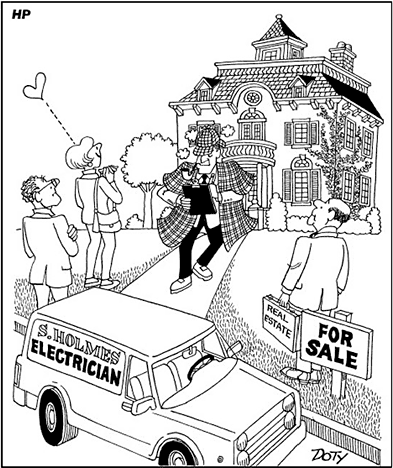June 2003
Whether you're captivated by period architecture or want to be adventurous with a fixer-upper, buying an older home can be an exciting experience. But before the closing, prospective buyers should do their homework to ensure that they fully understand what they're getting.
 Typically, when an existing house is about to be sold, potential buyers will have a professional home inspection performed. However, one shouldn't stop there. According to William Black, Vice President of Wire & Cable for the Copper Development Association, "Of all the things to check, nothing will affect your safety more than an inspection of the electrical wiring. So take the next step and request an inspection by an electrical specialist."
Typically, when an existing house is about to be sold, potential buyers will have a professional home inspection performed. However, one shouldn't stop there. According to William Black, Vice President of Wire & Cable for the Copper Development Association, "Of all the things to check, nothing will affect your safety more than an inspection of the electrical wiring. So take the next step and request an inspection by an electrical specialist."
The U.S. Consumer Product Safety Commission strongly recommends mandatory electrical inspections at the time a property is sold. Not a bad suggestion, since the U.S. Census Bureau reports a total of 110.2 million housing units in existence in 2001, 53 percent of which were built prior to 1970 and nearly one-third of which were over the age of 50. This translates into more than one-half of all homes in the USA with older electrical systems that often fall short of today's safety standards.
What To Know
Old wiring, by itself, does not necessarily mean trouble. However, an electrician will look for specific clues indicating hidden dangers or faults that could require expensive repairs ahead, which might influence your opinion of the home. Some examples include the following:
The electrical capacity of the home. Current code requires a minimum of 100 amps, although additional capacity is recommended for today's appliance filled households. It's also important that all wiring and circuit breakers be properly sized for their service.
Wire insulation. Insulation can be damaged when a circuit is heavily loaded, or when scuffed or pierced. Rubber insulation, usually from the 1960s or earlier, can easily crumble or flake off the wire.
Adequate outlets. Prior to World War II, homes were typically outfitted with only one outlet per room. Today, outlets are generally required every 12 feet or within 6 feet of any doorway, so extension cords are not needed as often.
GFCI protection. Ground fault circuit interrupter (GFCI) outlets should be installed in kitchens, bathrooms, garages and accessible outside decks and swimming pools.
Safe wiring. Some homes built in the 1960s and 70s were equipped with less expensive aluminum wiring instead of standard copper wiring in branch circuits, which deliver electricity to each room from the service panel. It was later discovered that aluminum connections can loosen over time, causing arcs and overheating at switches, outlets and the breaker panel.
When All Is Said and Done
Once both the home and electrical inspections are complete, you will have a comprehensive understanding of the home. Your electrician's assessment will inform you if there are potential electrical risks, as well as how to remedy any problems.
With this information, you can make an informed decision on whether or not to purchase the home. If you find the electrical wiring is not up to your standards, you have a couple of options. You can rewire and modernize the home, or you can continue to search for your dream house. Either way, you will sleep better at night knowing that you took the correct precautionary measures to ensure your family's safety.
For more information on home inspection tips and a list of questions to ask an electrical contractor, visit our Building Wire section and read "Do You Need An Electrician?".
